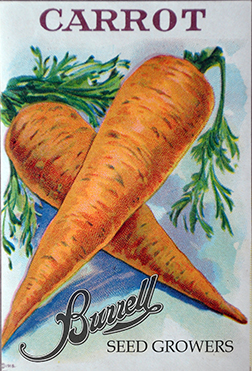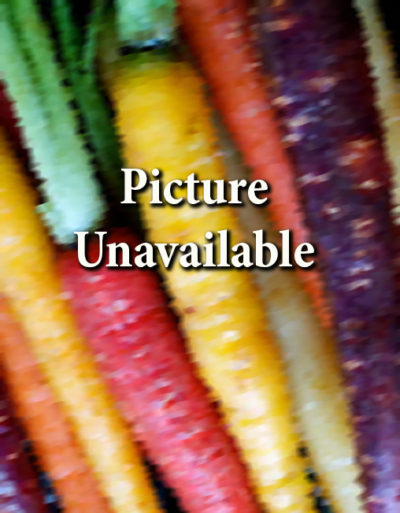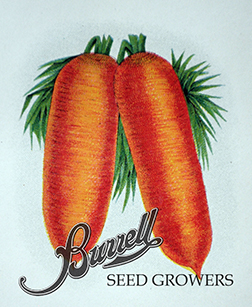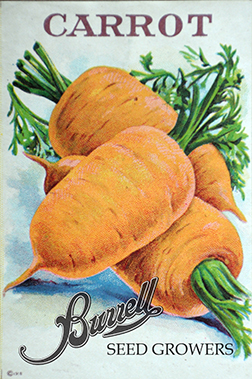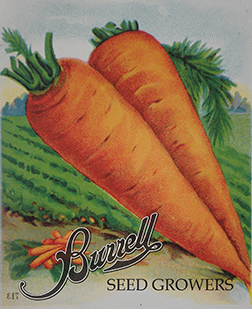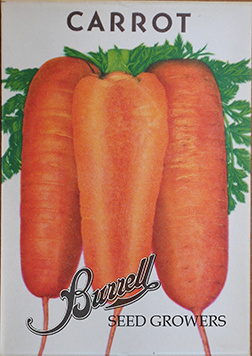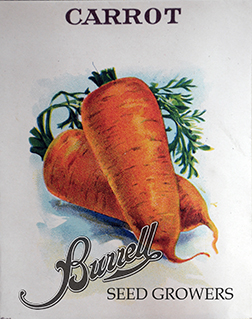Growing Carrots.
Ah the carrot! The convenient crunch in your lunch. A mainstay in soups, stews, salads and just general snacking. Easy to grow, garden varieties are so much sweeter than standard, bagged, store varieties, especially after a few frosts. Store them right in the ground through the winter with a heavy straw mulch and pull when needed. In a root cellar, store in sand or sawdust.
Any good soil is suitable. It is a good plan to plant a few radish seeds with the carrot, as carrot starts slowly and the radish marks the rows so they can be cultivated before the carrot comes up. Plant rows same distance apart as beets and thin to about 4 inches apart in the row, or, if from 2″-4″ apart, they need not be thinned. Cover about 1″ deep. Cultivate often and thoroughly. Sowing may be made as early in the spring as the soil can be put in good condition, or up to June 15 to 20.
Carrot seeds are tiny. Therefore, planting depth is about 1/8″ to 1/2″. Soak loamy, well worked soil before planting seeds and sprinkle ever so lightly until germination. Seedlings appear 14 to 21 days later. Days to maturity varies by type, but carrots can be planted from early spring to August 1st (longer season areas.) Harvest when deep orange (except rainbow carrots of course).
Good companion crops are beans, lettuce, onions, peas, peppers, radishes and tomatoes. A bad companion crop is dill.
Growing Carrots.
Ah the carrot! The convenient crunch in your lunch. A mainstay in soups, stews, salads and just general snacking. Easy to grow, garden varieties are so much sweeter than standard, bagged, store varieties, especially after a few frosts. Store them right in the ground through the winter with a heavy straw mulch and pull when needed. In a root cellar, store in sand or sawdust.
Carrot seeds are tiny. Therefore, planting depth is about 1/8″ to 1/2″. Soak loamy, well worked soil before planting seeds and sprinkle ever so lightly until germination. Seedlings appear 14 to 21 days later. Thin to a spacing of 1″ to 2″ apart. Our onion weeder is the perfect tool for that, but a pair of scissors works well too. Days to maturity varies by type, but carrots can be planted from early spring to August 1st (longer season areas.) Harvest when deep orange.
Good companion crops are beans, lettuce, onions, peas, peppers, radishes and tomatoes. A bad companion crop is dill.


